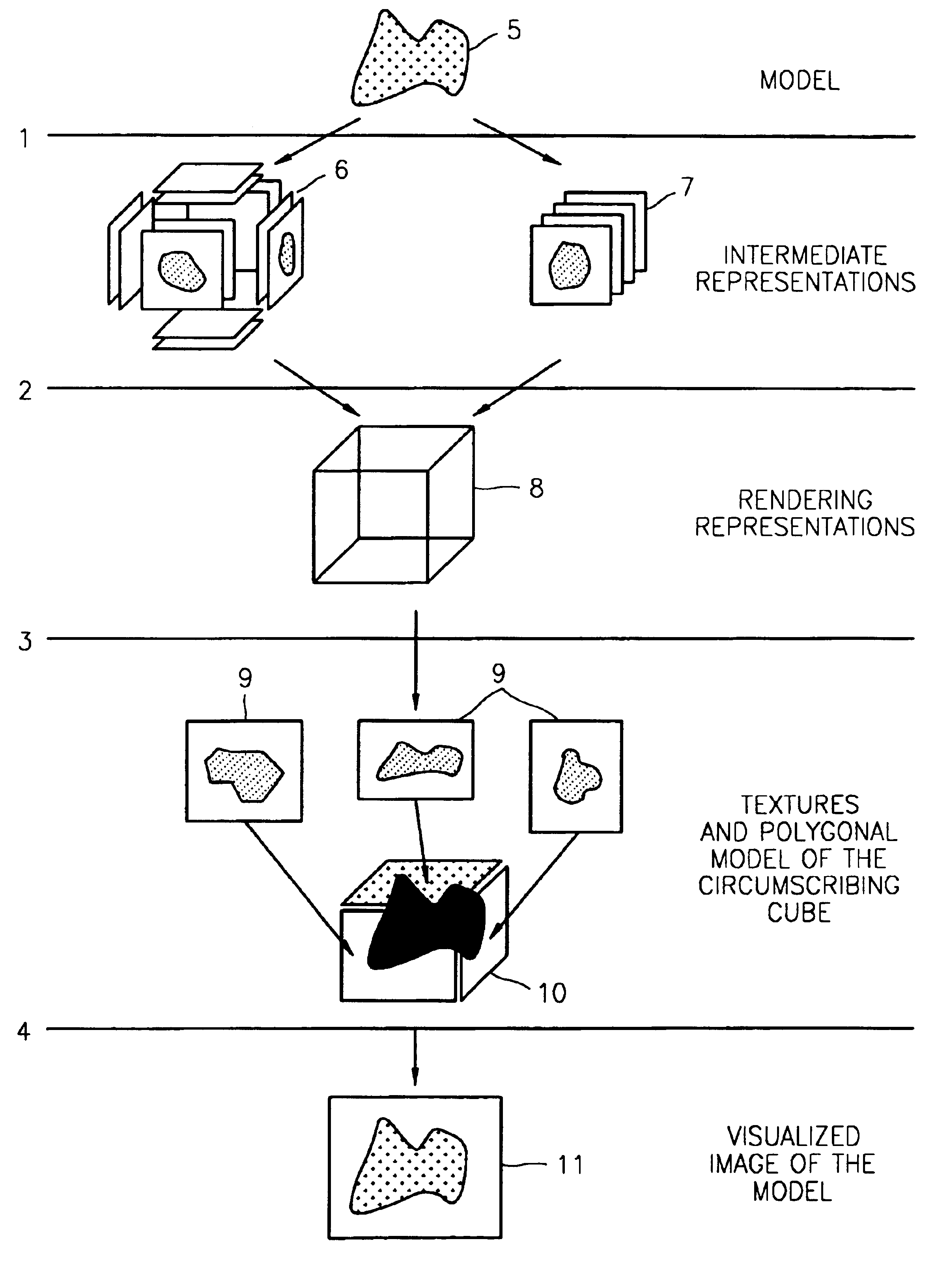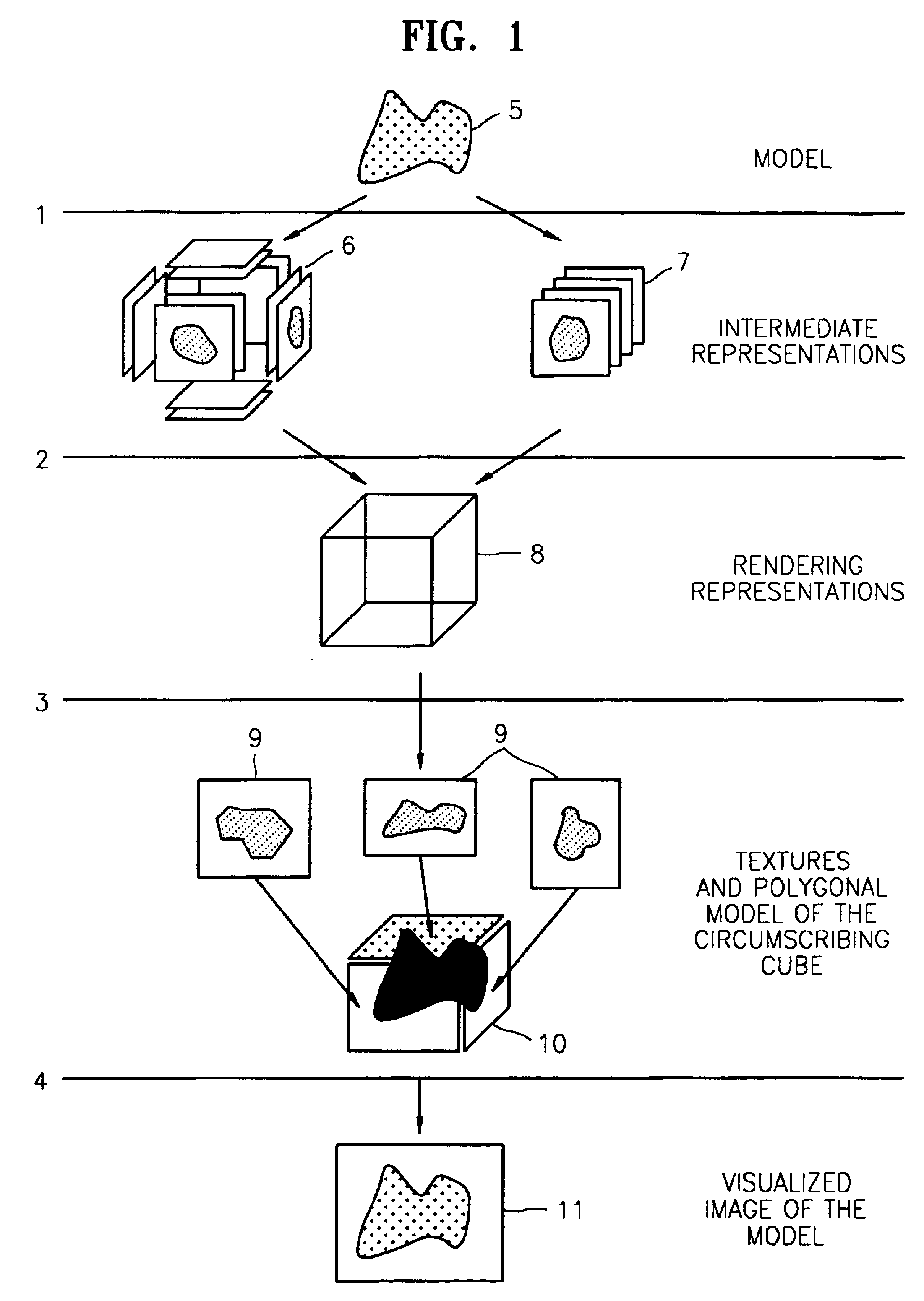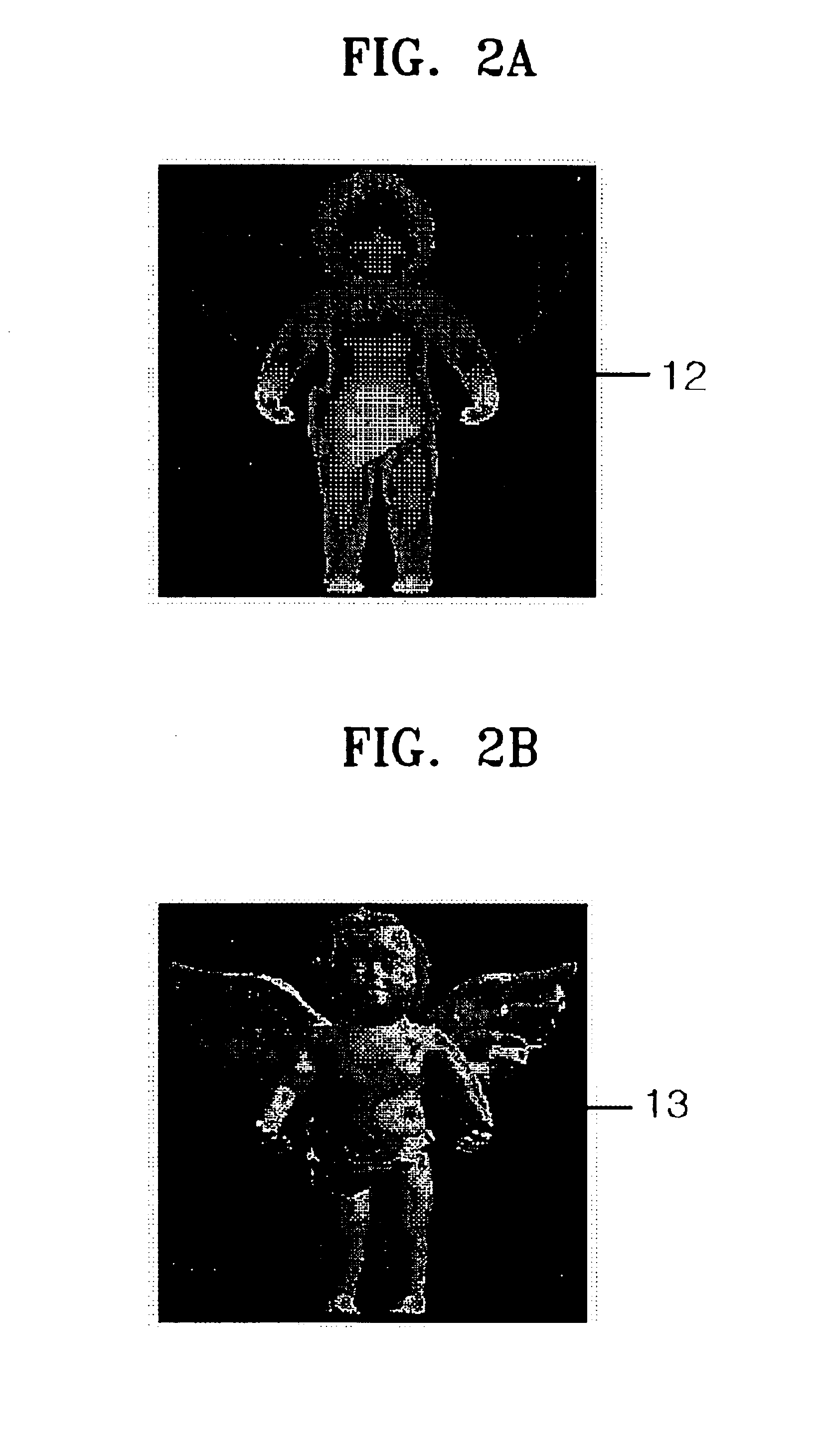Image-based methods of representation and rendering of three-dimensional object and animated three-dimensional object
- Summary
- Abstract
- Description
- Claims
- Application Information
AI Technical Summary
Benefits of technology
Problems solved by technology
Method used
Image
Examples
Embodiment Construction
[0051]The same elements are denoted by similar reference numerals throughout all the drawings illustrating the invention.
[0052]FIG. 1 shows: steps 1 to 4 of a method for representation and rendering of a three-dimensional object; three-dimensional object model 5; intermediate representations 6,7; rendering representation 8; textures 9; polygonal model 10 of the circumscribing cube; visualized image 11 of the model.
[0053]FIG. 2a,b shows gray-scale image 12 and color image 13.
[0054]FIG. 3a,b shows: model 14; base plane 15; set 16 of points of a model for each pixel of the layered depth image.
[0055]FIG. 4 shows: cube face 17; points 18 of rendering representation, normals 19 at points 18; visibility cones 20.
[0056]FIG. 5 shows: viewer's position 21; orthogonal projection 22 of the viewer's position point onto face 17; quadrants 23 to 26 of face 17; traversal directions 27 to 30 in each of the face quadrants.
[0057]FIG. 6a,b shows: angle 31 between normal 19 at point 18 and direction to ...
PUM
 Login to View More
Login to View More Abstract
Description
Claims
Application Information
 Login to View More
Login to View More - R&D
- Intellectual Property
- Life Sciences
- Materials
- Tech Scout
- Unparalleled Data Quality
- Higher Quality Content
- 60% Fewer Hallucinations
Browse by: Latest US Patents, China's latest patents, Technical Efficacy Thesaurus, Application Domain, Technology Topic, Popular Technical Reports.
© 2025 PatSnap. All rights reserved.Legal|Privacy policy|Modern Slavery Act Transparency Statement|Sitemap|About US| Contact US: help@patsnap.com



